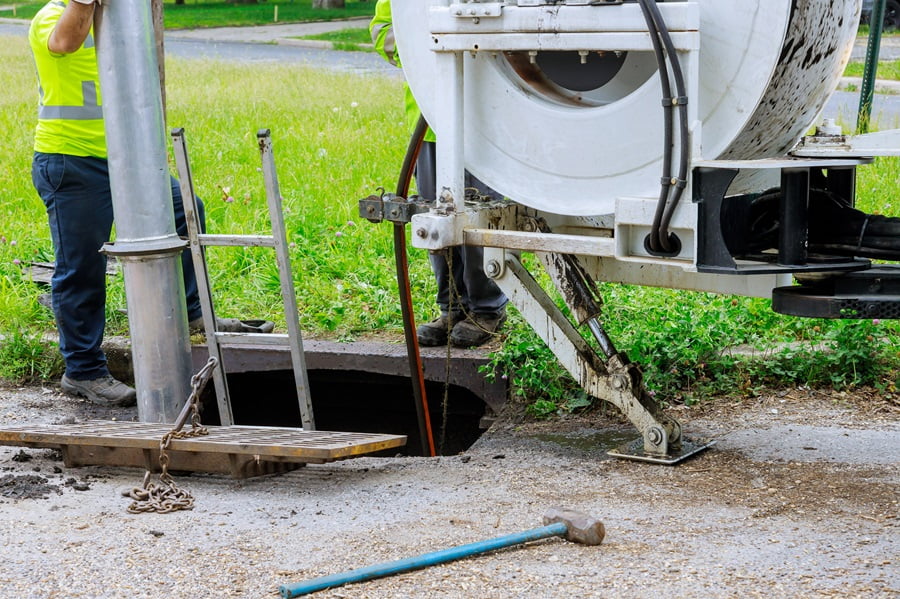Wastewater management is a critical aspect of health, safety, and environmental sustainability. Choosing the right equipment helps ensure that wastewater is disposed of efficiently, thus minimising the risk of water pollution and associated health hazards. Submersible sewage pumps, which are specifically designed for handling wastewater and sewage in various settings, play a crucial role in facilitating effective waste management.
Submersible sewage pumps are designed to work while fully submerged in the fluid they are pumping, differentiating them from traditional pumps that operate above the liquid. Typically, these submersible pumps are equipped with a hermetically sealed, watertight enclosure that houses the motor and prevents the ingress of water or other fluids, ensuring the pump’s reliable performance. Due to their unique design, submersible sewage pumps offer numerous advantages over conventional pumps, including reduced noise levels, increased efficiency, minimal maintenance, and a smaller footprint.
These pumps find use in a wide range of applications, providing an effective solution for moving wastewater, sewage, and other effluents. Typical settings where submersible sewage pumps are utilised include residential, commercial, industrial, and municipal environments, as well as wastewater treatment facilities and infrastructure projects.
In this comprehensive guide, we will take a closer look at the benefits of submersible sewage pumps, how they contribute to efficient wastewater management, the array of applications where they are best suited, and essential maintenance best practices. By the end of this guide, you will have a solid understanding of the impact and versatility of submersible sewage pumps and how to maintain them for optimal performance, ensuring you can make an informed decision about the wastewater management solution best suited for your property or project.
Submersible Sewage Pumps: A Detailed Overview of the Benefits, Applications, and Maintenance
Key Benefits of Submersible Sewage Pumps
1. Noise Reduction
Submersible sewage pumps operate underwater, which significantly reduces the noise they generate compared to conventional above-ground pumps. Their submerged operation makes these pumps ideal for locations where noise levels need to be minimised, ensuring a quieter and more comfortable environment for residents, businesses, and wildlife.
2. High Efficiency
The underwater operation of submersible sewage pumps allows for a more direct and shorter path for the wastewater to travel, resulting in higher efficiency and better performance, even when managing high head requirements. This increased efficiency translates to reduced energy consumption and, ultimately, lower operational costs.
3. Compact and Space-Saving
Submersible sewage pumps feature a compact design, often requiring less space for installation compared to traditional above-ground pumps. This attribute is particularly beneficial for areas with limited space or installations in confined spaces, such as basements or underground utility rooms.
4. Easy Maintenance and Increased Lifespan
Owing to their hermetically sealed design, submersible sewage pumps are protected against water ingress, reducing the likelihood of internal corrosion and damage. This feature, coupled with less exposure to atmospheric conditions, contributes to a longer life span and reduced maintenance requirements.
Applications of Submersible Sewage Pumps
1. Residential Wastewater Management
Submersible sewage pumps are commonly used in residential settings to manage sewage and wastewater disposal from homes and small communities. They can be installed in basements, septic tanks, or sewage pumping stations, providing an effective waste management solution for individual properties or entire neighbourhoods.
2. Commercial and Industrial Wastewater Treatment
In the commercial and industrial sectors, these pumps are utilised for managing wastewater generated during various activities and processes. They are employed in settings such as hotels, shopping centres, factories, and industrial plants for the efficient handling and transfer of wastewater to treatment facilities or disposal sites.
3. Municipal Wastewater Management
Submersible sewage pumps form an integral part of municipal wastewater management systems, helping local authorities handle sewage and stormwater effectively. These pumps can be installed in lift stations, sewage treatment plants, and pumping stations within the municipal network.
4. Infrastructure and Utility Projects
Submersible sewage pumps are also used in large-scale infrastructure and utility projects, such as underground tunnels, rail and road projects, airports, and water reclamation facilities. They help to prevent waterlogging and flooding during construction, ensuring smooth project completion and minimising downtime.
Essential Maintenance Tips for Submersible Sewage Pumps
1. Regular Inspection and Monitoring
Routine inspection and monitoring of submersible sewage pumps are crucial for early detection of any potential issues or abnormalities, allowing for timely intervention and maintenance. This practice contributes to prolonging the pump’s operational life while ensuring optimal performance.
2. Cleaning and Removal of Debris
Submersible sewage pumps can often be exposed to debris and solid particles in the wastewater, which may obstruct the pumps’ components and affect their performance. Regular cleaning and removal of debris will help prevent clogs and maintain the pumps’ efficiency.
3. Lubrication and Sealing
To ensure the smooth and continuous operation of submersible sewage pumps, it is essential to regularly check and maintain proper lubrication of moving parts, such as the impeller and bearings. Additionally, monitoring and maintaining the integrity of the pump’s seals will prevent water ingress and protect the motor from potential damage.
4. Scheduled Servicing
Regular servicing and maintenance, as per the manufacturer’s recommendations, is crucial for ensuring the longevity and reliable performance of submersible sewage pumps. This practice includes replacing worn parts, checking electrical connections and components, and ensuring that control panels function correctly.
Conclusion
Submersible sewage pumps play a vital role in efficient wastewater management across various sectors and applications. By understanding their advantages, diverse uses, and the importance of regular maintenance, you can make an informed decision when selecting the best wastewater management solution for your property or project.
Contact A&C Pumps Ltd today, and we’ll make sure you are investing in the right submersible sewage pumps. We’ll guide you through reliable and efficient handling of wastewater, working together to protect public health and the environment and contribute to a more sustainable future.

